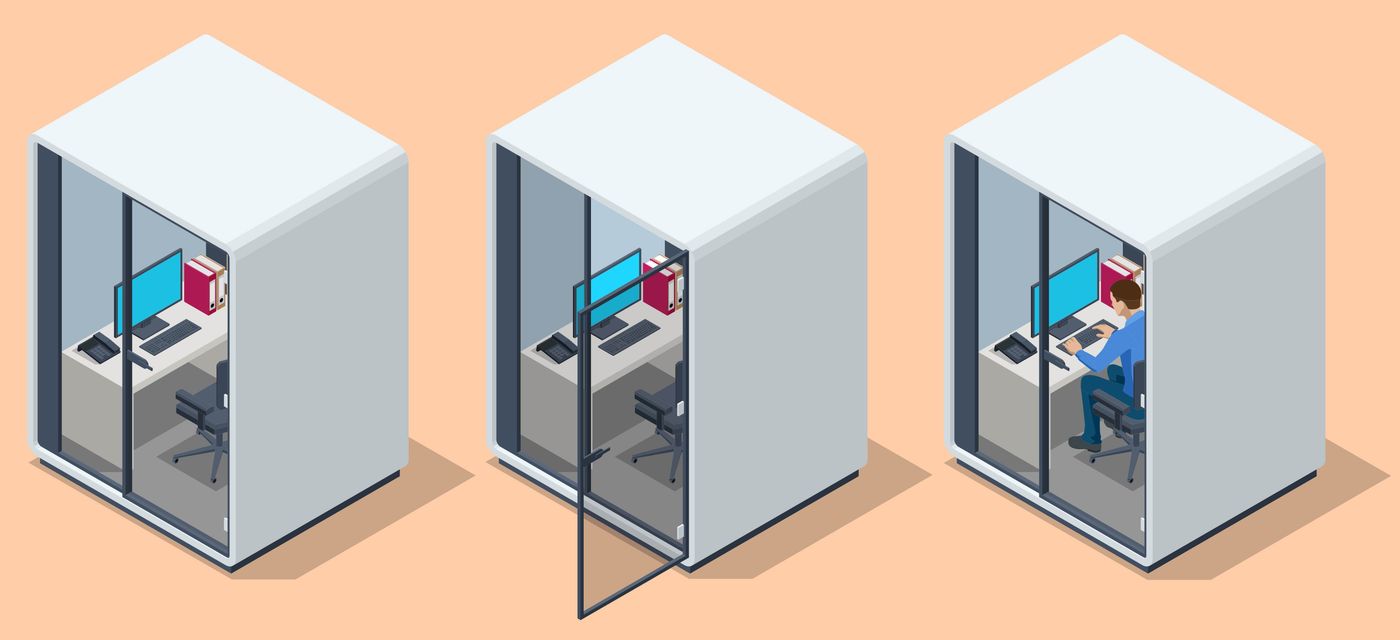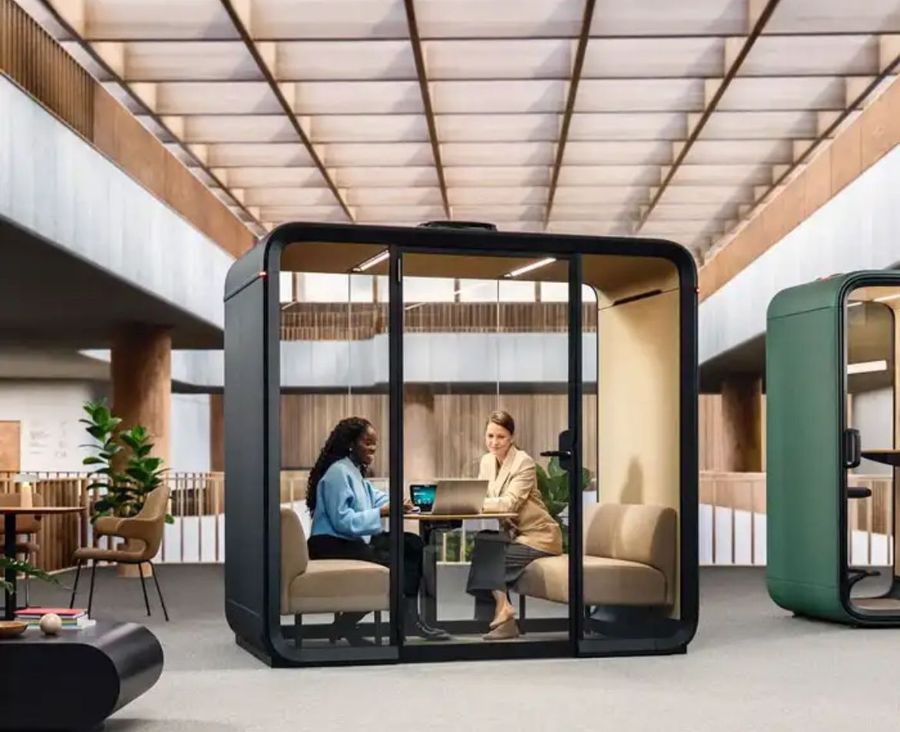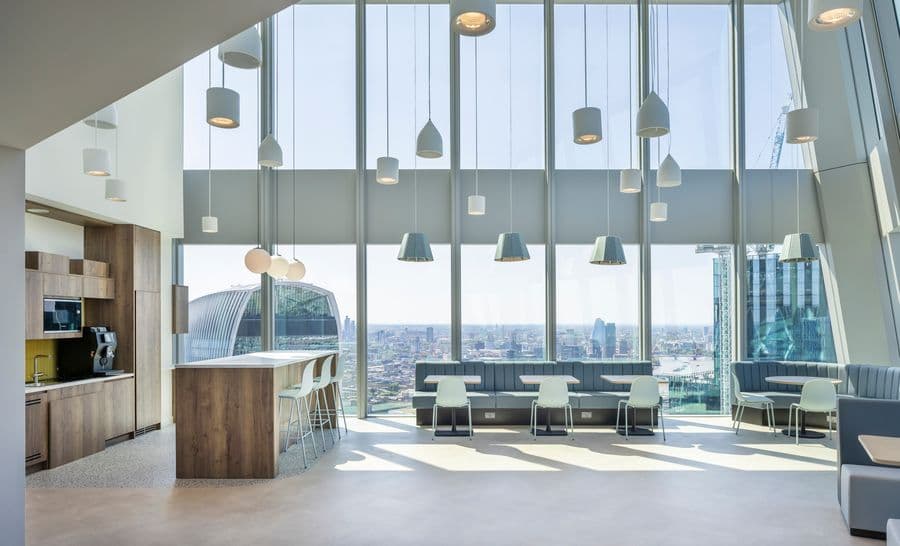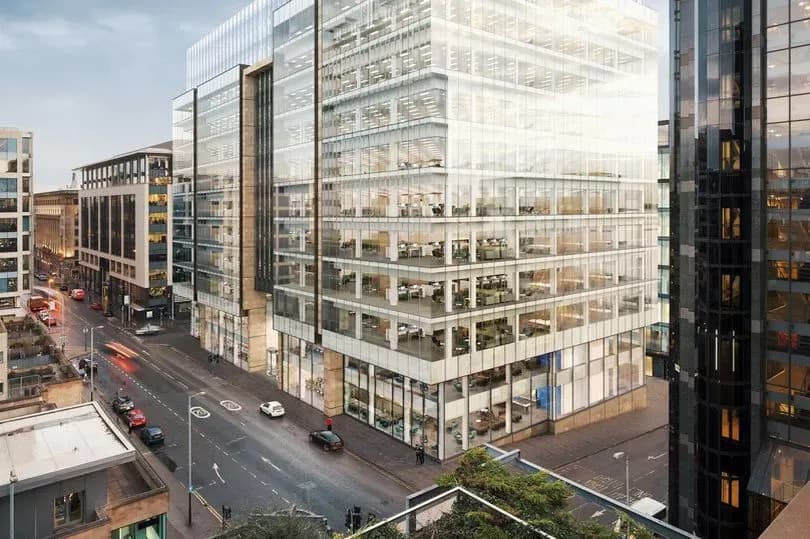Office Pods: Breaking office providers banks (and saving them 33.5%)

 Rishita
RishitaRishita
2nd Oct 2025
🕰️ 9 min read (1,755 words)
Globally, the office pod market was valued at USD 0.61 billion in 2024. By 2033, it’s expected to more than triple to USD 2.03 billion, growing at an annual rate of 11.43%. BRI | 2022
The introduction of the Office Pod has been one of the most significant expenses landlords and leaseholders have been advised to bear in office fit-outs. Specifically, these are modular, often sustainable, self-contained units designed to provide privacy, focus, and collaboration space without the cost or permanence of traditional construction.
Adapting to Demand
In major UK business districts, office occupancy now averages around 37%, and many buildings provide only 56 desks per 100 employees (down from 79 per 100 just a few years ago).
Since companies are sharing office and desk space now, the demand for office pods makes perfect sense. UK tenants are opting for modular pods, prioritising flexible, acoustic meeting spaces over traditional fit-outs to drive office transformation and increase workspace productivity.
Open-plan layouts now fall short of the flexibility, privacy, and adaptability sought after in modern workspaces. The rising adoption of acoustic pods is a direct response to tenant dissatisfaction with outdated office designs, and industry reports confirm a strong push toward spaces that support both focused and collaborative work scenarios.
Market Fundamentals

Globally, the office pod market was valued at USD 0.61 billion in 2024. By 2033, it’s expected to more than triple to USD 2.03 billion, growing at an annual rate of 11.43%.
The meeting pod segment is growing even faster. Worth USD 1.76 billion in 2024, it is projected to hit USD 4.75 billion by 2030, a growth rate of 18.01% per year. This reflects a global shift in office use: flexible space is expected to make up 30% of total office stock by 2030, up from around 5–10% today.
In terms of adoption, North America currently leads with 35% of the market, followed by Europe at 28%. The fastest growth, however, is in Asia-Pacific, where rapidly urbanising districts are hungry for flexible space solutions.
The UK market is showing strong fundamentals. In 2024, London saw a 34% increase in office demand, creating fertile ground for innovations like pods. Landlords and developers are under pressure to deliver the kind of flexible, well-equipped work environments tenants now expect, and since construction costs are at an all-time high, pods fit neatly into that requirement.
Types of Office Pods
Office pods have evolved into a diverse family of modular, flexible solutions. Each type is designed to address specific workplace needs.
Meeting Pods

These are enclosed or semi-enclosed spaces within open-plan offices, providing a quiet zone for team discussions, brainstorming, or virtual meetings. Modular designs allow them to be reconfigured as needs change, supporting both breakout areas and focused sessions.
Work Pods & Acoustic Meeting Pods
Smaller than meeting pods, these individual pods are ideal for focused solo work, confidential calls, or video conferencing. Acoustic designs minimise distractions, delivering better concentration and higher productivity.
Phone Booths & Soundproof Meeting Pods
Office phone booths and soundproof meeting pods provide ultra-private, insulated environments for calls and video chats, enhancing privacy and reducing noise for both users and their colleagues.
Nap Pods & Sleeping Pods

Created for wellness-driven offices, nap pods and sleeping pods let employees recharge during the workday, supporting overall health and productivity.
Accessible Pods
These are specially designed to accommodate wheelchair users or anyone with mobility needs, ensuring inclusivity and universal design in the workplace.
Outdoor Pods
Built for flexibility, outdoor pods extend collaboration, focus, or breakout spaces beyond the traditional indoor office, perfect for companies wanting to maximise all available real estate.
In summary, the choice of pod, be it for meetings, individual work, quick calls, or rest, allows organisations to create agile, supportive environments that boost workplace productivity, inclusivity, and wellbeing.
The Productivity Payoff
Beyond the headline growth figures, one of the strongest arguments for office pods is the productivity boost they can deliver.
Noise is one of the biggest drains on productivity in open-plan offices. Research shows employees lose an average of 86 minutes a day due to noise distractions. Minimising this noise can boost productivity by 48%.
Premium office pods are ISO 23351-1 certified and achieve 35–45dB sound reduction; top models like Silen regularly deliver up to 43dB in lab tests, providing privacy for calls and meetings. This sound attenuation brings the internal environment to library-quiet levels, reducing workplace distractions and boosting focus.
For employers, the benefits extend beyond getting more work done. Companies with comprehensive wellness strategies, which often include better acoustic design, see a 2.5x return on investment leading to lower absenteeism and improved engagement. Broader wellness programmes have shown an average 6:1 ROI through reduced healthcare costs and performance gains.
For landlords, these productivity benefits are not just a bonus; they can directly affect asset performance. Offices that solve acoustic issues and provide flexible focus spaces can justify rent premiums of 10-15% compared to comparable stock without these features.
Solving the Space Utilisation Problem
-min 2-900x630.jpg)
Nearly half of workplace leaders now use utilisation data to plan their hybrid programmes, and the trend is toward higher seat-sharing ratios and smaller overall portfolios.
Pods help solve the utilisation challenge by allowing space zoning within existing floors. In practice, that means one corner of an office can serve as private phone booths, meeting rooms, and collaborative areas at different times of the day, without the cost or disruption of permanent build-outs.
Speed is another significant advantage. Traditional construction can take weeks or months; a pod can be installed in 24–48 hours, which means underused space can be revenue-ready in just a few days.
Financial Sense
-900x589.jpg)
Installation Costs
Office pods can offer significant savings compared to traditional meeting rooms. In London, premium pods cost around £100 per square foot to install versus £150–£200 for conventional spaces which amounts to a 33.5% upfront saving. They also retain 50–70% of their value if office layouts change.
The CRE Investment Angle
The UK commercial real estate market has been under pressure, with prime London West End office yields around 4%. Investors are seeking ways to differentiate assets, and flexible, technology-enabled space is emerging as a key strategy.
- Capital values are rising slowly after post-financial crisis lows.
- Transaction volumes in flexible workspace rose by 23% in 2024, showing growing institutional interest.
For landlords, office pods can:
- Activate vacant space quickly
- Generate temporary revenue during lease transitions
- Reduce void periods
- Enhance property marketability
Returns

- Payback: 18-36 months, depending on utilisation and pricing
- Internal Rates of Return (IRR) in high-demand areas: 15–25%.
- Operating Costs: 2–3% of capital annually for maintenance; £200–400 per pod/month for cleaning; 5–7% annually for tech upgrades.
Financing Options
- Fit Out Finance: Include pods in your fit-out finance application with Leanspace.
- Hire Purchase: Spreads costs over 3-5 years
- Rental Agreements: Preserve capital for other investments
Technology: Making Pods Smarter
Today’s office pods are not just wooden boxes with glass doors. Many come pre-fitted with integrated power, ventilation, and video conferencing setups. The more advanced models now include IoT sensors to monitor occupancy, air quality, temperature, and even noise levels.
This kind of data is becoming critical. 78% of facility managers say they are relying more heavily on occupancy analytics to optimise their space.
Some pods integrate directly with booking systems and workplace apps. AI-powered scheduling can automatically adjust availability based on real-time usage patterns. For hybrid teams, that means fewer double-bookings and a smoother experience.
The introduction of meeting pods and smart booking systems helped the Met Office boost meeting space utilization by 30%. Eptura | 2025
These integrations make pods part of a broader workplace management ecosystem, rather than standalone units.
Sustainability and ESG Benefits
-900x506.png)
In Central London, 83% of offices have EPC ratings of C or lower; a clear opportunity for upgrades.
Office pods employing recycled materials, efficient energy use, and modular construction can cut carbon footprints by 40-60%versus traditional fit-outs. For instance, companies like Framery have committed to reducing carbon emissions through initiatives such as carbon-neutral delivery and take-back schemes for recycling at the end of a pod's life cycle.
These efforts align with circular economy principles, emphasising the reuse and refurbishment of materials to extend product life and reduce waste. Additionally, many pods are designed for easy disassembly, facilitating the recycling and repurposing of components. By integrating these sustainable practices, office pods not only contribute to a greener environment but also support organisations in achieving their environmental, social, and governance (ESG) goals.
Since pods are modular, they align with circular economy principles: they can be relocated, reconfigured, and reused rather than demolished. That flexibility can also help buildings achieve BREEAM credits. For office providers seeking comprehensive sustainability frameworks that encompass social impact alongside environmental performance, explore B Corp certification pathways for office providers, which can enhance ESG credentials whilst supporting responsible business practices.
Implementation and Risks
Installing pods is usually straightforward, though considerations include ventilation, access, and power supply. Most only need a 13A connection, though high-spec units with advanced HVAC may require three-phase power.
Planning permission is not typically required, but listed buildings or conservation areas can be exceptions.
As Sustainable Office Designs become increasingly common and office technologies evolve rapidly, there is a risk that current office pods may become obsolete or mismatched to future needs. High-quality pods, however, are designed for modularity, are easier to upgrade, and retain better resale value, thereby allowing landlords and employers to adapt quickly and recoup investment if reconfiguration or resale becomes necessary.
When installing office pods, insurers typically treat them as tenant improvements or fixtures, meaning they are covered under standard commercial property or business insurance, much like built-in partitions or fitted furniture. This makes the insurance process straightforward: one just needs to declare them and their value in their policy, and they shall be protected against risks like fire, flood, or accidental damage.
Looking Ahead
The office pod market is evolving fast. Manufacturers are blurring the lines between furniture and architecture, adding features like predictive maintenance, environmental controls, and even virtual reality collaboration tools.
For many landlords, the appeal is clear: a flexible, cost-effective way to improve tenant experience, unlock revenue from underused space, and future-proof assets in a changing market.
If the growth forecasts hold, and with financing solutions like Leanspace lowering the entry barrier, pods could move from being a competitive advantage to an expected standard in modern commercial offices.
Related Articles

Top 10 UK Commercial Property Opportunities for 2026
Oct 15, 2025

The Ultimate Guide to Office Fit-Outs: What to Include (and How Much It Costs in 2025)
Oct 15, 2025

Glasgow Office Market 2025: Lease Renewals and Re-Gears Surge as Prime Space Runs Out
Oct 15, 2025